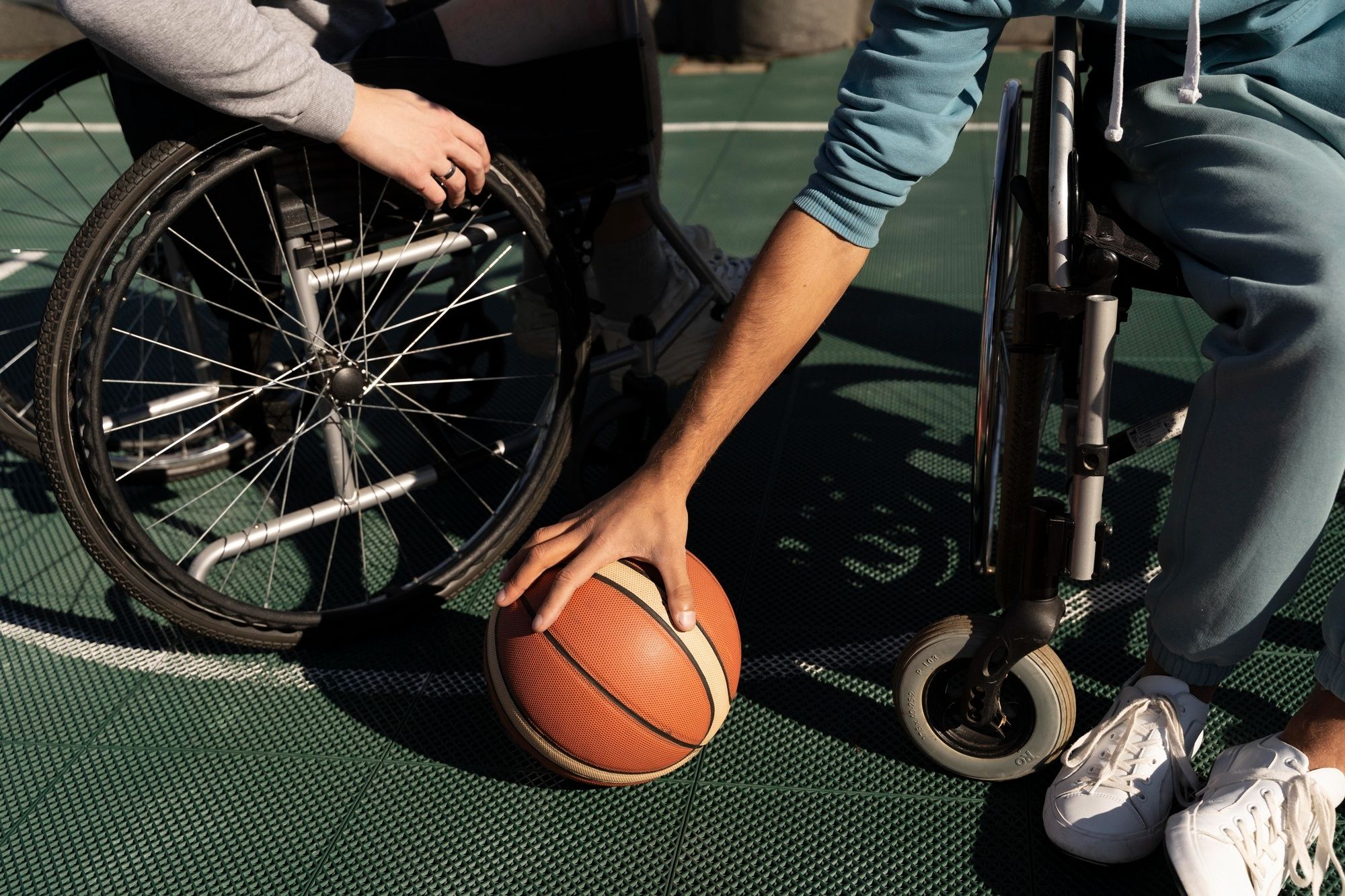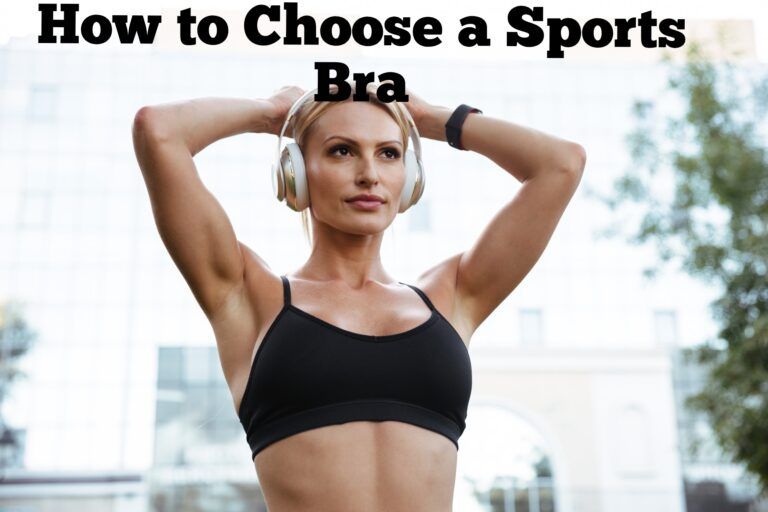In a world where fitness keeps evolving, adaptive equipment is a standout.
This niche is breaking conventions and creating a level playing field where athletes with disabilities are not just competing but excelling.
It’s not just about technology or sports.
It’s about identity, autonomy, and breaking down barriers that have excluded people for too long.
From prosthetics that push human limits to wheelchairs designed for speed, adaptive equipment is changing the game.
These tools do more than make sports possible.
They equalize the playing field, letting athletes go beyond the limits set by their disabilities.
In this article, we’ll explore more than just the functionality of adaptive gear.
We’ll look into the heart of a community that has harnessed its power and is claiming its place on the podium.
| Tips for an Inclusive and Accessible Workout | |
|---|---|
| Space Planning | Make sure your exercise area is accessible and obstacle-free. A safe and inclusive environment helps you move freely and focus on your workouts. |
| Customized Exercises | Create routines that cater to your individual abilities. Focus on what you can do rather than on limitations. |
| Use of Adaptive Equipment | Adaptive equipment, like modified dumbbells, adjustable gym machines, and sports wheelchairs, transforms physical exercise into an accessible and inclusive activity. These resources enhance independence and facilitate exercise for everyone, regardless of physical limitations. |
| Community Involvement | Join fitness groups or online communities for support and motivation. Sharing experiences and advice with others facing similar challenges can enrich your fitness routine, making it both social and educational. |
| Explore Different Disciplines | Don’t stick to just one form of physical activity. Try yoga, swimming, cycling, or adaptive sports to keep things interesting. Each discipline offers unique benefits and can help you discover new ways to stay fit without getting bored. |
| Collaborate with Health Professionals | Work with physical therapists, occupational therapists, or other specialists. They can provide expert advice, adaptation techniques, monitor your progress, and help prevent injuries, ensuring a healthy and effective path to your fitness goals. |
| Educate Yourself | Learn about best practices for training with specific disabilities. Use resources like webinars, workshops, and articles to gain valuable advice and strategies on maximizing the benefits of physical activity while respecting your body’s limits. |
1. Modified Dumbbells
2. High-Performance Prosthetics
3. Sports Wheelchairs
4. Wearable Technology
5. Adaptive Weightlifting Equipment
6. Handcycles
7. Adaptive Swimming Aids
8. Adaptive Treadmills
9. Adaptive Rowing
10. Adaptive Yoga
Accessories like straps, cushions, and chairs make yoga accessible to all.
They provide balance and a path to inner awareness for people with different mobility levels.
These tools assist with poses, enhance relaxation, and create space for meditation.
They allow everyone to explore their physical limits and boost mental well-being, regardless of physical challenges.
11. Multisensory Fitness Equipment
12. Virtual Training Apps and Platforms
Accessible Fitness: How the World Is Making Sports Inclusive for Everyone
Accessibility and inclusion in sports and fitness are gaining momentum globally, with recreational centers and gyms striving to cater to the specific needs of individuals with disabilities.
These spaces are emerging not just as training arenas but also as platforms for autonomy and community solidarity.
A prime example is seen in centers like the Adaptive Sports Centers, scattered across various parts of the world.
These centers offer a broad range of sports disciplines, from more extreme activities like climbing to water sports such as water skiing, all adapted to maximize accessibility.
They provide specialized equipment, including sports wheelchairs, advanced prosthetics, and sensory devices, aimed at eliminating physical barriers.
However, their mission goes deeper: they are committed to fostering independence, confidence, and a sense of community among participants.
A similar dedication is observed in establishments like the Courage Kenny Rehabilitation Institute and international equivalents, renowned for their personalized approaches to physical therapy and recreational activities.
In these environments, teams of experts devise training regimens that embrace both physical and psychological well-being, emphasizing the critical role of mental health in sports and rehabilitation.
Meanwhile, major global fitness chains are recognizing and embracing the need for accessibility.
Initiatives undertaken by the YMCA and other similar organizations include the introduction of ramps, reconfiguration of equipment, and availability of adaptive fitness classes.
These advancements represent a tangible commitment to inclusion, encouraging individuals with disabilities to engage more actively in fitness communities.
Innovative Equipment for Wheelchair Training
- Accessible Lifting and Exercise Systems: Adjustable equipment, such as cable stations and rowing machines, provide accessible strength and endurance training. Installed at appropriate heights, they support a range of upper body workouts, including pull-ups and suspended activities, promoting an inclusive exercise experience.
- Resistance Bands: Flexible tools that can be anchored to various fixed points, these devices enable stretching and strengthening exercises for different muscles, essential for wheelchair users.
- Small Dumbbells: Ideal for lifting exercises, such weights are suitable for strengthening the muscles of the arms, shoulders, and torso.
- Manual Pedaler: Positioned in front of the chair, the tool promotes arm exercise, simulating the pedaling movement, beneficial for circulation and muscle strengthening.
- Specific Cardio Devices: Examples include stationary hand bikes or arm ergometers, promoting intense cardiovascular activity without the use of the legs.
- Core Strengthening Accessories: Tools like discs or stability balls allow for focused training on the body’s central area, promoting better balance and stability.
- Customized Yoga and Pilates Mats: With a thicker design for comfort and non-slip materials, these mats facilitate the practice of holistic disciplines for those using a wheelchair.
- Electric Muscle Stimulation Tools: They assist in activating otherwise unused muscles, contributing to the maintenance or increase of muscle mass and circulatory health.
- Supports for Posture and Stability: Devices that ensure proper posture and support during exercises, preventing possible injuries and ensuring proper body alignment.
- Lightweight Medicine Balls: Useful for dynamic throwing or rotating exercises, improving coordination, balance, and central body strength.
- Ankle and Wrist Weights: These accessories, adding moderate resistance, intensify the training effect.
Adaptive Fitness: Key Brands for Inclusive EquipmentSeveral brands have specialized in or expanded their offerings to include fitness equipment suitable for individuals with disabilities. Here are some examples:
|
Paralympic Legends: Unsurpassed Champions of the Modern Era
Tatyana McFadden (USA): A dominant force in wheelchair track and field events, McFadden has secured numerous gold medals across several Paralympics.
Daniel Dias (Brazil): Regarded as one of the greatest Paralympic swimmers of all time, Dias has amassed an impressive tally of gold medals.
Trischa Zorn (USA): Although her career predates 2022, Zorn warrants mention. She holds the record for the most Paralympic medals, most of them gold, in swimming.
Jonas Jacobsson (Sweden): A highly decorated Paralympic shooter, Jacobsson has enjoyed a long and successful career with multiple gold medals.
Zahra Nemati (Iran): Known for her archery prowess, Nemati made history by winning medals in both the Paralympics and the Olympics.
Ellie Cole (Australia): Cole is a Paralympic swimmer who has earned numerous gold medals across various competitions, becoming one of Australia’s most decorated athletes.
Jody Cundy (UK): Cundy has competed in both swimming and cycling, winning Paralympic gold medals in both sports.
Natalia Partyka (Poland): Known for her exploits in table tennis, Partyka is another athlete who has competed in both the Olympics and the Paralympics.
Alex Zanardi (Italy): After an accident ended his Formula 1 career, Zanardi found new success in Paralympic cycling, earning several gold medals.
Marieke Vervoort (Belgium): Known for her track and field career, Vervoort competed successfully before choosing euthanasia to end her suffering from a chronic illness in 2019.
Useful Links and Resources
For additional information and support, the following websites offer valuable content and resources to help make fitness more accessible and enjoyable for individuals with disabilities:
Adaptive Sports USA: Explore a variety of sports programs and events for individuals with disabilities.
The National Center on Health, Physical Activity, and Disability (NCHPAD): This site is a hub for information on physical activity, health promotion, and disability, offering articles, videos, and personalized assistance.
Christopher & Dana Reeve Foundation: Connect with a community dedicated to improving the quality of life for individuals living with paralysis. They offer guidance, resources, and peer support.
Paralyzed Veterans of America: Find support, sports programs, and advocacy for veterans and others with spinal cord injury or disease.
Special Olympics: An organization that changes lives by promoting understanding, acceptance, and inclusion between people with and without intellectual disabilities through sports.
Disabled Sports USA: This association provides adaptive sports opportunities for individuals with disabilities to develop independence, confidence, and fitness.
Conclusion
The variety of companies producing adaptive sports equipment is a positive signal toward a more inclusive future in the world of sports.
This progress not only broadens the opportunities for individuals with disabilities to engage in various physical activities.
It also underscores the importance of a collective and innovative approach to overcoming existing barriers.
The commitment of these companies is crucial for keeping the dialogue on the need for accessibility alive and represents a tangible step forward in the right direction.



